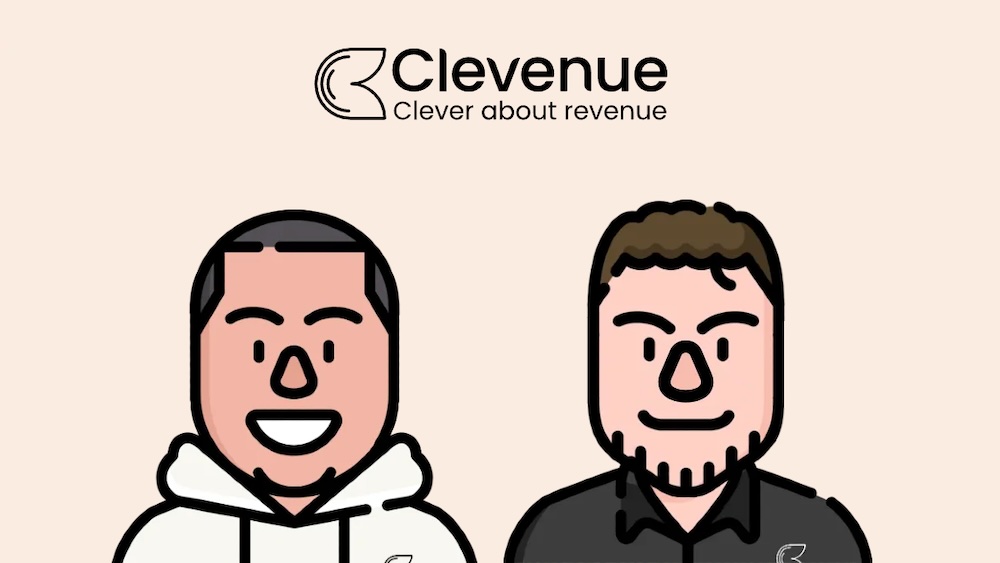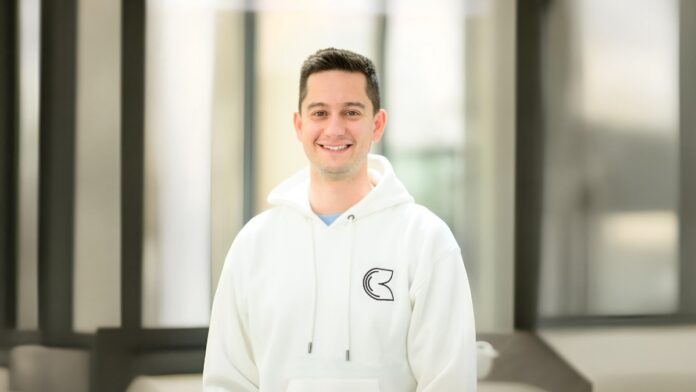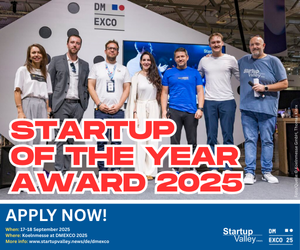Clevenue transforms revenue planning for B2B tech companies by making it more accurate, effective, and equitable
Can you introduce your company and share a bit about the founders’ backgrounds and what inspired you to start this venture?
Clevenue was built by me (Alex Handsaker), who has spent years in tech growing businesses in revenue teams, and Ste Errington, who has spent years building software and tech solutions.
Clevenue was created after we personally experienced tech layoffs, along with almost 500,000 other people since 2022 (layoffs.fyi). We discovered that many businesses designed their growth plans using simplistic spreadsheets, often found online as free templates. These spreadsheets were overly simplistic, filled with flawed assumptions and bad data. They often assumed that adding more salespeople would automatically generate more sales, despite decreasing marketing efficacy and dwindling market demand.
We recognized that as businesses committed to larger sales and revenue targets, excessive hiring wasn’t limited to purely sales teams. This growth would then branch out across the business to account for the extra customers the business was planning on bringing in through the elevated targets. Customer success, operations, development, engineering— the entirety of the business is designed around the commercial ambitions of the company. When these businesses finally realized that the targets were unattainable, it wasn’t just sales teams that lost their jobs; everyone else hired in became collateral damage to the mistakes that stemmed from the spreadsheets.
We set out to not only make sales capacity planning easier but to change the way that people modeled it, with people no longer being simply a 1 or a 0 in a spreadsheet.
What is the core vision of your company, and what steps are you taking to achieve it?
We want to change the way that people approach revenue planning, making it more accurate, effective, and equitable for everyone involved. By helping people simulate the real-world effects of the decisions that they make, they are less likely to overhire, overspend, and ultimately repeat the layoff cycle that we have seen happen before.
You wouldn’t attempt to manage your customers in a spreadsheet; instead, you’d use a CRM like Hubspot or Salesforce. We want people to feel exactly the same way about planning and Clevenue.
Who is your target audience, and how do you identify and meet their needs effectively?
We’re aimed at revenue and leadership teams in B2B tech companies, where profitable, efficient growth is a key goal. We help to streamline the process, removing the need for technical knowledge or spreadsheet skills. Instead, just bring your data and strategy, and we can do the rest.
What major challenges has your company faced so far, and how have you managed to overcome them?
We’re trying to create a brand-new category of software within a densely populated market, all while solving a difficult technical challenge. We can’t yet say that we’ve fully overcome the challenge as we’re miles from product-market fit. However, we’re in the process of educating and showing people the future of revenue planning, and we’re confident that it’s only a matter of time and effort.
What sets your company apart from others in the industry? What is your unique selling point?
Existing revenue platforms focus on forecasting revenue based on the opportunities that they have, which ignores the effects of hiring, marketing plans, and economic changes that can all impact the effectiveness of the plan. These platforms are totally divorced from planning, which is done in spreadsheets in 95% of businesses, which take a simplistic view of revenue, relegating people to being a simple 1 or a 0 in a spreadsheet.
Clevenue works differently and starts with the people, modeling the contribution that every single person has in the business and how that all rolls upwards to the company target. Leadership can then simulate strategies and decisions which are then simulated to show the impact across generated revenue, cost, and efficiency.
Can you share your plans for the future direction of the company? Are there any upcoming developments or projects you’re excited about?
While we’re focused on helping to intelligently plan around the revenue team currently, we know that revenue is the engine behind the rest of growth, an area that the rest of the business depends on. We want to help businesses intelligently capacity plan across far more of their organization, using AI-driven suggestions based on their own data and plans.
What are some of the key milestones your company has achieved since its inception?
We worked our way through many different prototypes and stages of prototypes. The biggest key milestone for us was when we got our MVP out to our pilots and saw their reaction to it. We realized at that point that what we’re building brings huge value to businesses, and that it’s now just a case of getting it in front of people.
How do you approach innovation within your company to stay ahead in a competitive market?
As we’re bootstrapped, we know that our approach to growth is going to have to look different from the competition, and that we’re not necessarily going to have the resources to “beat them” at each turn. This means we’re focused on building to the vision, not what the competition is creating, and working to define how planning should really look.
Can you discuss a time when your company had to pivot or adapt its strategy? What did you learn from that experience?
Our strategy is a pretty agile one; however, planning isn’t yet an evergreen topic. Many businesses are still in an annual or biannual cadence, and we know that a huge part of success will be in making planning so easy that it becomes a continuous process. That involves stepping back from how people currently plan and building around what people want out of planning, and not just a more intricate plan.

How do you ensure your company culture aligns with your business goals and vision?
We’re bootstrapped, which means that we have to grow efficiently and effectively. This is where using Clevenue ourselves comes in. It helps us to not only understand what growth is possible for ourselves but closely control our appetite for growth and risk.
What role do your customers play in shaping your products and services?
Our customers acutely drive the product vision and roadmap. However, in building something that doesn’t yet exist elsewhere, we also have to be mindful of building what is possible, not just what is easiest. We’re aware of how many other tools filling different tasks exist within revenue, and so we’re mindful not to overlap without good reason.
Could you offer three pieces of advice for aspiring entrepreneurs based on your experiences?
Make sure you have a complementary founder – If you’re a techy, find someone that knows sales, marketing, and finance. If you’re someone that is that, then make sure you find a techy, and most importantly, make sure you can speak a common language when unpacking the problem.
Find a problem you care about and can understand – If it’s not a problem you care about, will you really have the perseverance, and will you really care about your customers? If you simply want to make money fast, go get a job and you’ll have a paycheck at the end of the month.
You’ve got to put in the work – The idea of a working day should go completely out the window, but it shouldn’t be a struggle. Because you’re on a problem you want to solve, work is no longer work: it’s progress. Not working then becomes not making progress.
More information you will find here
Thank you Alex Handsaker for the Interview
Statements of the author and the interviewee do not necessarily represent the editors and the publisher opinion again.





















